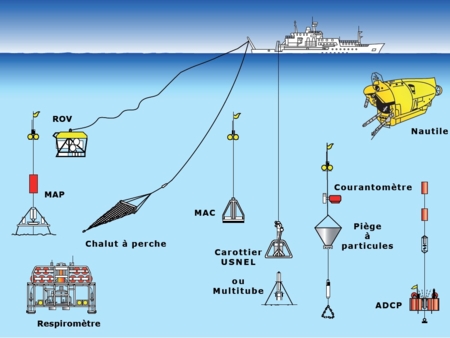Metabolic diversity of microorganisms in deep-sea vent active chimneys
Since the discovery of oceanic hydrothermal vents, microbial diversity of this extreme environment was studied using both cultivation an molecular approaches. In this study the microbial diversity of active chimney from both TAG and Lucky Strike sites (Mid Atlantic Ridge) was investigated using both molecular survey and continuous enrichment culture in a bioreactor. To reproduce as close as possible environmental conditions the cultures were performed in oligotrophic conditions, in the presence of hydrogen and carbondioxide in the ga sweeping mix or using in situ sampled fluid/sea water mix as culture medium. The effect of environmental changes such as temperature and the absence or presence of sulphur was also investigated. Archaeal and Bacterial diversity was studied in both culture and natural samples. Through 16SrRNA gene sequences analysis of the enrichment cultures, microorganisms affiliated to ArchaeogIobales, Thermococcales, Desufurococcales, Deferribacterales and Thermales were detected depending of culture conditions. The effects of environmental changes (i. E. Modification of culture conditions: temperature, electron donors and acceptors availability, medium composition) were shown to affect the microbial community in culture, as happens in their environment. We have also investigated the role of anammox in hydrothermal settings. Evidence for the occurrence of anammox in this particular habitat was demonstrated by concurren surveys including the amplification of 16SrRNA gene sequences, ladderanes lipids analysis and measurement of a 14N-15N production in isotope pairing experiments at 60 and 85°C.







